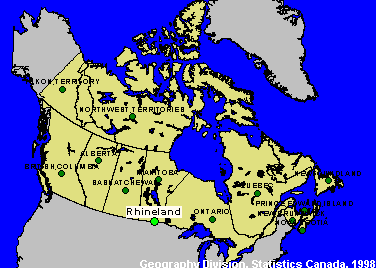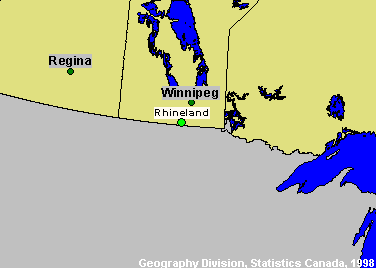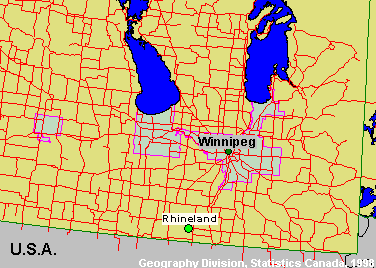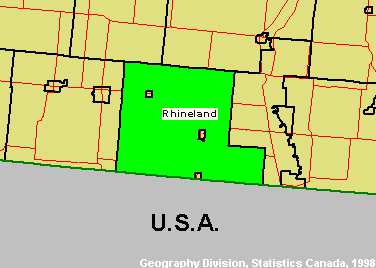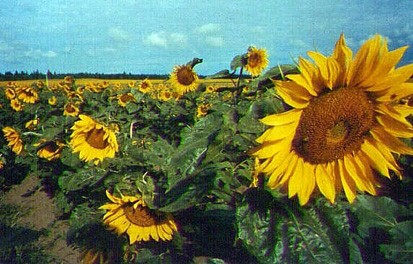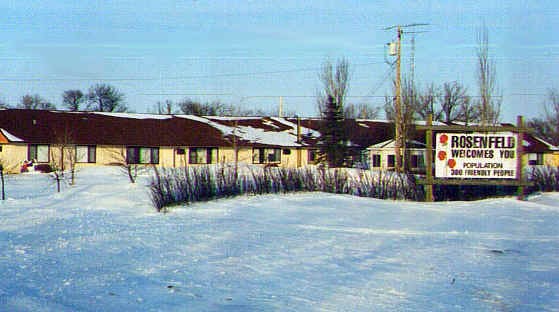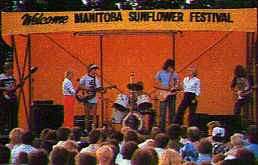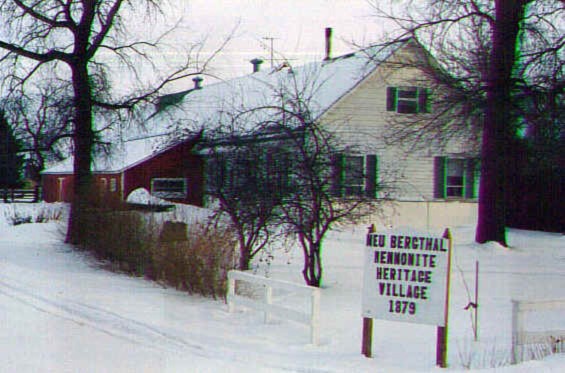Rhineland, Manitoba
Site Number: 20
CSD (1991):
Principal Researcher(s): n/a
Assistant Researcher(s): n/a
Located near the American border in Manitoba, Rhineland's primary industry is agriculture (38%). The population (4150) has decreased by 4% over the past few years. The labour force participation rate is 73%, the unemployment rate is 4%, and 14% of the community is below LICO.
The Rural Municipality of Rhineland lies along the Canada-U.S.A. border in south central Manitoba. Part of the province's Central Plains Region, the community is roughly 100 kilometres southwest of Winnipeg, Manitoba's Capital. The municipality is a mix of rural and small urban communities with a population of just over 4200 residents.
Site information
It was primarily people of Dutch Mennonite origins from southern Russia who first settled in the Rhineland area. Many of these people arrived between 1874 and 1875 at the request and invitation of the Dominion Government, which was eager to bring agriculture to the Prairie Provinces.
In 1883, as the population of the area grew, preliminary steps began to form some type of local government. The municipality was incorporated under the name Douglas in 1884 and on January 8th of that year, the first council meeting was held. In early 1891, the name of the community was changed from Douglas to Rhineland, and the municipality's boundary was expanded westward.
In 1917, some of this land was transferred back to a neighbouring municipality and Rhineland took on its present configuration. From its beginnings, the community was built on courage and determination, and these same characteristics make Rhineland what it is today.
Documents
These documents summarize the work completed and insights gained from updating Economic Capacity Profiles for the New Rural Economy2 (NRE2) sites. The initial set of Profiles was based on the 1996 Census and 2001 NRE site profiles data. The updated Profiles are based on 2001 Census data and 2003 NRE site profiles data.
On the map
